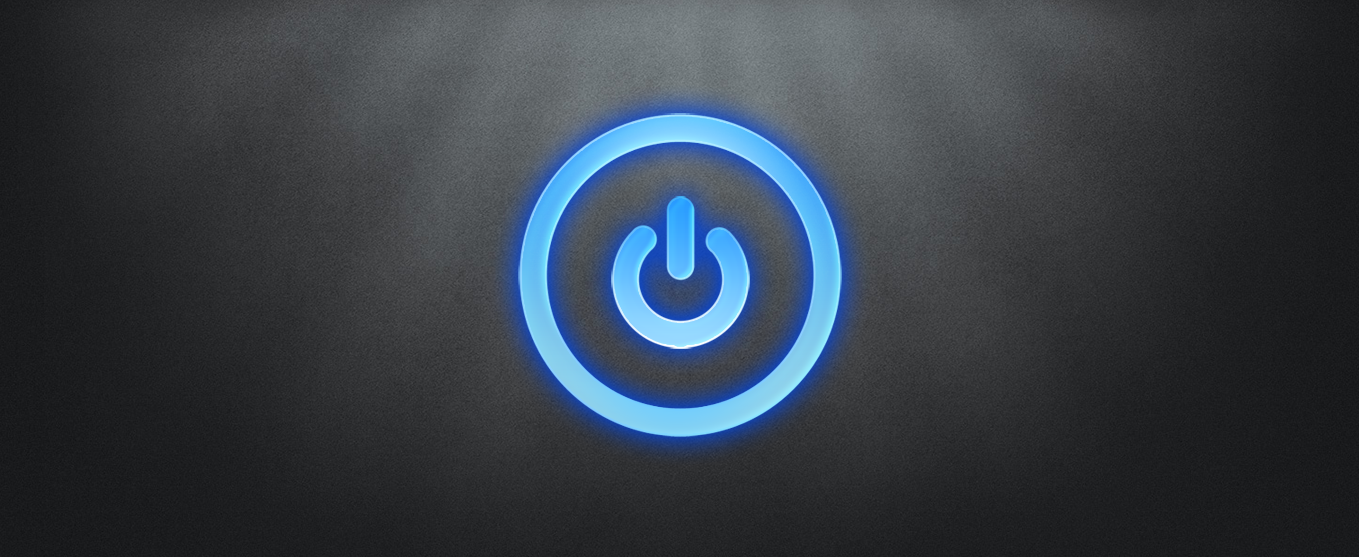Invite Scene - #1 to Buy, Sell, Trade or Find Free Torrent Invites
#1 TorrentInvites Community. Buy, Sell, Trade or Find Free Torrent Invites for Every Private Torrent Trackers. HDB, BTN, AOM, DB9, PTP, RED, MTV, EXIGO, FL, IPT, TVBZ, AB, BIB, TIK, EMP, FSC, GGN, KG, MTTP, TL, TTG, 32P, AHD, CHD, CG, OPS, TT, WIHD, BHD, U2 etc.
LOOKING FOR HIGH QUALITY SEEDBOX? EVOSEEDBOX.COM PROVIDES YOU BLAZING FAST & HIGH END SEEDBOXES | STARTING AT $5.00/MONTH!
Nvidia Max-Q laptops: Impressively thin, but industrial design needs work
-
Check out what our members are saying
Great service and trustworthy. Keep the good work :D Cheers came on this scene thinking it may be a bit seedy but i found the absolute opposite. Inviter reached out and gave better customer service than pretty much all other services i'v…Had what I needed! 10/10 Highly recommend. Has the invites for the trackers you need. Seriously. ** I thought these reviews could have been fake. They were not. ** …Quick, to the point, good job invitescene !
came on this scene thinking it may be a bit seedy but i found the absolute opposite. Inviter reached out and gave better customer service than pretty much all other services i'v…Had what I needed! 10/10 Highly recommend. Has the invites for the trackers you need. Seriously. ** I thought these reviews could have been fake. They were not. ** …Quick, to the point, good job invitescene ! I didn't have much expectation at first but then I got what I was looking for and super fast with an excellent service. Keep the good work. I'm glad this site exist
I didn't have much expectation at first but then I got what I was looking for and super fast with an excellent service. Keep the good work. I'm glad this site exist Prefect and always a great communicator from start to finish will use again A+ for service and supportDefinitely, you can trust him. Fast and efficient.
Prefect and always a great communicator from start to finish will use again A+ for service and supportDefinitely, you can trust him. Fast and efficient. I was nervous spending so much money on an invite at first and there has been some delay due to how hard the access to empornium.me is. But I remained calm and waited for the ve…
I was nervous spending so much money on an invite at first and there has been some delay due to how hard the access to empornium.me is. But I remained calm and waited for the ve… Everything went smooth. Keep up the good workSeller is great! Fast to respond and reliable. Had to wait but it's reasonable since seller is at work. 10/10 would buy something else again in the future.Fast, responsive and patient. I had the item exactly as described, and worked with me to get everything set up. I would buy from you again.
Everything went smooth. Keep up the good workSeller is great! Fast to respond and reliable. Had to wait but it's reasonable since seller is at work. 10/10 would buy something else again in the future.Fast, responsive and patient. I had the item exactly as described, and worked with me to get everything set up. I would buy from you again. This seller is very professional, polite, and prompt. I was originally suspicious about this Site but I was very pleasantly surprised. I would like to recommend this to anyone wh…A remarkable man, a pleasing seller, super patient, explained everything to me, discounted me, each and everything. I enjoyed the purchase with him, I received everything immedia…
This seller is very professional, polite, and prompt. I was originally suspicious about this Site but I was very pleasantly surprised. I would like to recommend this to anyone wh…A remarkable man, a pleasing seller, super patient, explained everything to me, discounted me, each and everything. I enjoyed the purchase with him, I received everything immedia… Hi everyone, I am presenting a thought after purchasing an Invite from this site. Inviter was super instantaneous to get back to me after I had questioned if he had any avai…Very informative and pleasant demeanour. Response time was impressive. Certainly lives up to his legacy as well hassle-free transaction all around.Speedy and responsive, excellent rates, have ordered my invites and have not had any issues! 10/10 recommend!The service was really fast and fair. There haven't been any problems, and the seller was very professional.
Hi everyone, I am presenting a thought after purchasing an Invite from this site. Inviter was super instantaneous to get back to me after I had questioned if he had any avai…Very informative and pleasant demeanour. Response time was impressive. Certainly lives up to his legacy as well hassle-free transaction all around.Speedy and responsive, excellent rates, have ordered my invites and have not had any issues! 10/10 recommend!The service was really fast and fair. There haven't been any problems, and the seller was very professional. Great & fast service ThanksEverything was fine. He made a huge effort to find invite for me. Great communication. So if You need an Invite just contact @InviterVery prompt and professional.Well, he was really fast and loved that he didn't ask much and simply sent me an invite. 😊 It was painless and prompt. Thanks a lot, man.Don't know how he does it, but @Inviter delivers! Had a smooth transaction, no hiccups!Sent the invite fairly quickly, and sent very short, straight to the point, concise messages.Inviter provides lower prices than other providers and other forum owners by a higher margin. He is the man to buy from if you are looking for a torrent invites to any website h…Last night I had the opportunity to write to the seller about wanting to buy the product. Today I received a reply with detailed instructions on how to pay. I received the prod…
Great & fast service ThanksEverything was fine. He made a huge effort to find invite for me. Great communication. So if You need an Invite just contact @InviterVery prompt and professional.Well, he was really fast and loved that he didn't ask much and simply sent me an invite. 😊 It was painless and prompt. Thanks a lot, man.Don't know how he does it, but @Inviter delivers! Had a smooth transaction, no hiccups!Sent the invite fairly quickly, and sent very short, straight to the point, concise messages.Inviter provides lower prices than other providers and other forum owners by a higher margin. He is the man to buy from if you are looking for a torrent invites to any website h…Last night I had the opportunity to write to the seller about wanting to buy the product. Today I received a reply with detailed instructions on how to pay. I received the prod… Ordered 2 torrent invites and the support shown and the speed at which it was done was fantastic. Really happy I found this place. When I need more torrents I know where to come.…
Ordered 2 torrent invites and the support shown and the speed at which it was done was fantastic. Really happy I found this place. When I need more torrents I know where to come.… Trustable seller, 100% money back guaranteed. Traded ptp, bibliotik and cinematik.Real tracker invite that's non-trivial to get with a quick turnaround for the simple act of site participation. Pretty awesome.
Trustable seller, 100% money back guaranteed. Traded ptp, bibliotik and cinematik.Real tracker invite that's non-trivial to get with a quick turnaround for the simple act of site participation. Pretty awesome. -
Our picks
-

Buy Empornium Invite
Inviter posted a topic in Premium Sellers Section,
Offering Empornium.is / Empornium.sx / Empornium.me / Empornium / EMP Invite, PM me for the price.
Commodity URL: https://www.empornium.is/, https://www.empornium.sx/, https://www.empornium.me/
Commodity REVIEW: https://www.invitescene.com/topic/40396-empornium-emp-porn-2020-review/-
-
- 693 replies

Picked By
Inviter, -
-

Buy BroadcasTheNet Invite
Inviter posted a topic in Premium Sellers Section,
For limited time I'm offering BroadcasThe.Net (BTN) Invite, PM me for price.
URL: https://broadcasthe.net/-
-
- 371 replies

Picked By
Inviter, -
-
![[In Stock] Buy REDActed.CH (RED) Invite](//www.invitescene.com/applications/core/interface/js/spacer.png)
[In Stock] Buy REDActed.CH (RED) Invite
Inviter posted a topic in Premium Sellers Section,
For limited time I'm offering REDActed.CH (RED) Invite, PM me for price.
URL: https://redacted.ch/-
-
- 112 replies

Picked By
Inviter, -
-





![[In Stock] Buy REDActed.CH (RED) Invite](https://www.invitescene.com/uploads/monthly_2019_12/Redacted.png.a96849d08b6f36b6140a4ead4a4cceba.png)
Recommended Posts
Join the conversation
You can post now and register later. If you have an account, sign in now to post with your account.